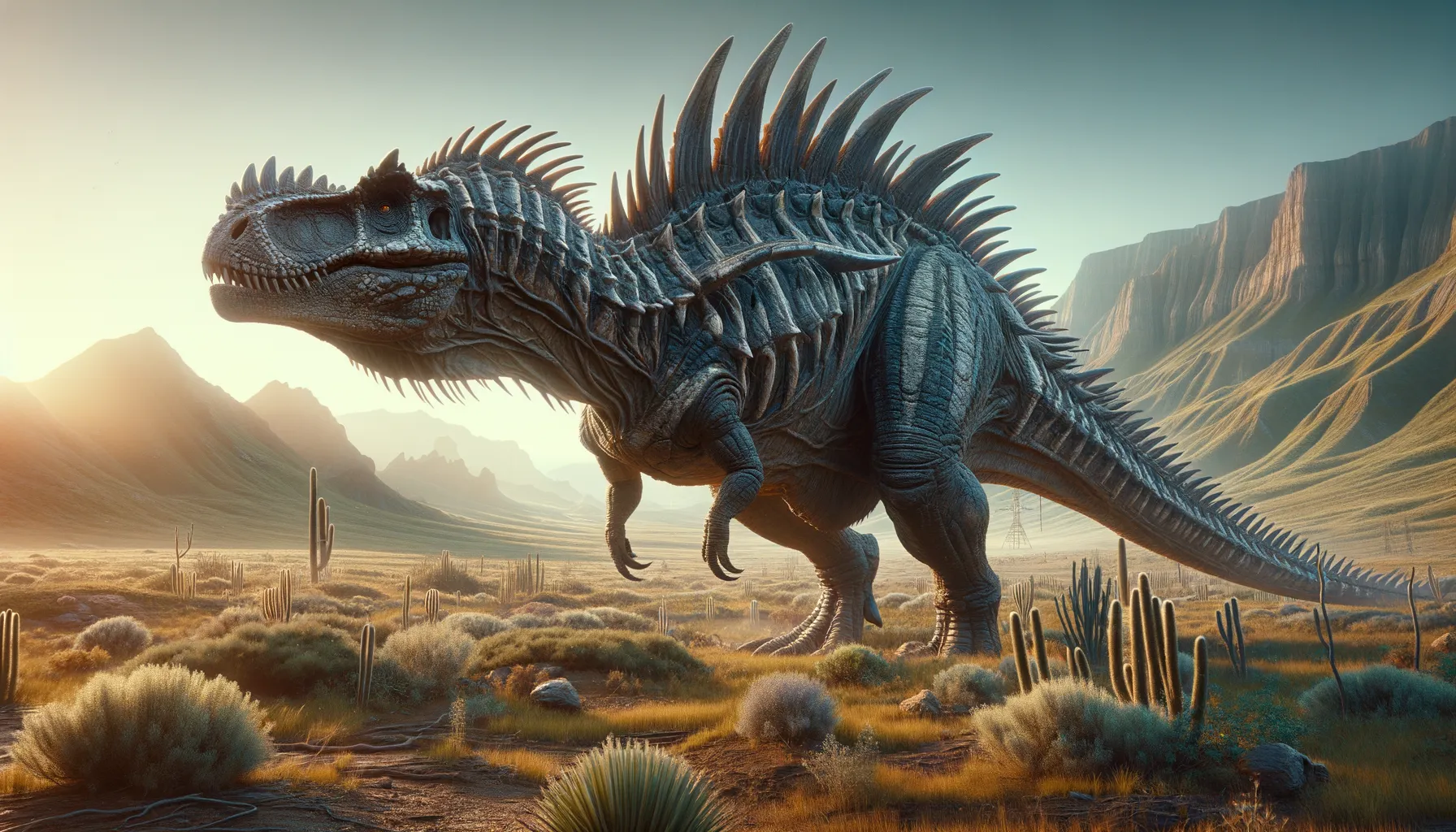
Polacanthoides
Armored guardian of the ancient past!
Period
Cretaceous
Length
Reached up to 5 meters in length.
Height
Stood about 1.5 to 2 meters tall.
Weight
Approximately 1,500 kilograms.
Polacanthoides was a formidable armored dinosaur, known for its impressive defensive adaptations. Its bony plates and spikes provided protection against predators. Living during the Cretaceous period, this herbivore roamed ancient landscapes in search of vegetation. Despite its heavy armor, it moved slowly, focusing on foraging rather than speed. As an ankylosaurian, Polacanthoides shared many characteristics with its spiky relatives, playing a crucial role in understanding dinosaur behavior and adaptation.
Diet
Polacanthoides was a herbivore, feeding primarily on low-lying vegetation. Its diet likely included ferns, cycads, and other plants that thrived in its Cretaceous habitat.
Hunting
As a herbivore, Polacanthoides did not hunt other animals. Instead, it used its keen sense of smell to locate lush plant areas and safely consumed its vegetarian diet.
Environmental challenges
Polacanthoides faced numerous environmental challenges, including changing climates during the Cretaceous period. It dealt with the competition for plant resources from other herbivorous dinosaurs. Predation pressure from large carnivorous dinosaurs was a constant threat, but its armor helped deter attacks. Additionally, habitat changes due to geological activity required adaptability.
Speed
Relatively slow-moving due to its bulky build.
Lifespan
Estimated to be several decades in the Mesozoic era.
First discovery
First described in the early 20th century.
Fun Facts
- Polacanthoides was a small armored dinosaur that lived during the early Cretaceous period about 130 million years ago.
- This dinosaur was known for its bony armor plates and spikes that covered its body, acting as a strong defense against predators.
- Polacanthoides was a herbivore, which means it ate plants, and likely feasted on low-lying vegetation.
- The name Polacanthoides means 'many spined' due to the numerous spikes and plates along its back.
- Fossils of Polacanthoides have been mainly found in England, giving us clues about its habitat and lifestyle.
- Despite its impressive armor, Polacanthoides was likely not very fast, relying more on its defenses than speed.
- Though not as famous as some other dinosaurs, Polacanthoides gives us important insights into the diversity of armored dinosaurs.
Growth and Development
Polacanthoides hatched from eggs and underwent significant growth to reach adulthood. Its development involved growing extensive armor, a process that likely took several years. Juveniles may have been more vulnerable to predators until their protective plates fully developed.
Habitat
Polacanthoides inhabited forested environments, where dense vegetation provided both food and cover. This dinosaur preferred areas that offered plenty of low-growing plants for browsing. Its habitat supported a diverse ecosystem including other herbivores and various predators.
Interaction with other species
Polacanthoides coexisted with other herbivorous dinosaurs, often competing for similar food sources. Its interactions with predators were mainly defensive, relying on its armor to fend off attacks. It likely communicated with others of its kind through visual signals and perhaps vocalizations.
Natural lifespan
Polacanthoides likely lived up to 30 years or more in the wild.
Reproduction
Polacanthoides reproduced by laying eggs in nests possibly made of vegetation. The parent may have provided some level of care, such as guarding the nest. Hatchlings grew rapidly and developed their protective armor as they matured.
Social behaviour
Polacanthoides might have been a solitary creature or formed small groups for protection. Its behavior included using its tail as a potential weapon against threats. Communication among Polacanthoides could involve visual displays, especially during mating seasons.
Fossil locations
Fossils of Polacanthoides have been found primarily in Europe, especially in regions that were once part of the Cretaceous landmass. These discoveries help scientists understand its distribution and adaptation. Its fossils provide insight into the habitats and environments it once lived in.
